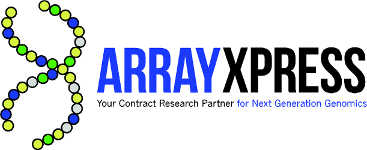
Innovating Agriculture with Genomics
Genotyping
Genotyping is the process of determining the genetic profile, or genotype, of an organism. More recently, high throughput, genome-wide genotyping using next-generation sequencing technologies (Genotyping-by-Sequencing) has become widely accessible and affordable to the Agriculture community. This technology has the power to generate dense genetic maps, being particularly useful in marker-assisted breeding programs.
ArrayXpress specializes in providing state of the art comprehensive DNA genotyping services with quick turnaround using:
- Mid- to high-throughput: Illumina's Next Generation Sequencing technology
- Low- to mid-throughput: Taqman/SYBR Green Real-time PCR assays
Our team of scientists has extensive experience in the field and can assist you in selecting the most appropriate technology and designing a genotyping assay customized to your needs.
Next Generation Genomics in Agriculture
ArrayXpress has developed advanced genomics processes using NGS to increase the performance and cost effectiveness of genetic studies in Plant Sciences and Crop Improvement.
Establishing valuable genomics resources
Sequencing genomic DNA, mRNA (cDNA) and/or non-coding RNAs from your reference production genotypes provides genomic resources that will have a direct impact on understanding: the overall biology of your production genotypes, gene regulation (e.g., the role of non-coding regulatory RNA elements in gene expression and protein activity), and genome structure and dynamics (e.g., alternative splicing events). These types of data and analysis can have a direct impact on understanding the genome architecture for applications in crop genetics.
Marker development, QTL mapping, wide crosses and alien gene introgression
Genotyping parental lines of mapping/production populations and/or of wild relatives to accelerate the discovery of molecular markers (e.g., SSR-simple sequence repeats and/or SNP-single nucleotide polymorphism markers). Such markers can be used to construct genetic maps, identify QTLs, and monitor alien genome introgression (wide crosses). The QTL-associated markers for a particular trait of interest can then be used in selecting progenies carrying favorable alleles via marker-assisted selection (MAS, see below).
Expression Quantitative Trait Loci (eQTL)
The genetic improvement of crops can be greatly advanced by the use of genetic markers to direct breeding efforts and programs. Identifying relevant markers is not an easy task as most agronomic traits of economic interest are determined by multiple genes (polygenic).
Quantitative genetics characterizes continuous traits that are regulated by multiple genes or Quantitative Trait Loci (QTL). Most economically relevant traits in the agricultural sector follow a quantitative pattern. At the molecular level, QTL are very difficult to pinpoint. More recently, gene expression data have also proven powerful tools in quantitative genetics. Using recombinant inbred lines or back-crossed populations, transcription profiling can unleash the true power of genome-wide QTL analysis in discovering genes, called expression QTL (eQTL), that regulate the trait(s) of interest.
ArrayXpress has expertise in applying eQTL to marker selection and genetic improvement programs using genome-wide expression profiling with Next Generation Sequencing technology (RNA-seq). RNA-seq of contrasting genotypes for traits of interest (e.g., yield, seed quality, resistance to pests and diseases, nutrient efficiency, drought and cold tolerance) can identify candidate genes involved in or associated with that particular trait. The comprehensive, quantitative expression mapping of these candidate genes, together with the phenotyping of segregating populations developed from the contrasting genotypes, provides valuable expression QTLs (eQTLs).
For species whose genome is not yet sequenced, ArrayXpress can perform de novo transcriptome analysis using a combination of long (PacBio RS SMRT) and short (Illumina) reads. The information generated can then be used to dissect complex patterns of multi-gene inheritance and assign possible functions for uncharacterized genes. Likewise, gene expression analysis can unveil novel genes that are involved in a desired phenotypic trait; characterize mutant varieties and lineages; decipher molecular networks and pathways; and assess genetic epistasis. Transcriptomics has proven to be a powerful tool for gene discovery (identification of agronomically useful genes), SNPs discovery, gene mapping, analysis of quantitative traits, development of EST-derived (simple sequence repeat) SSR markers, significantly contributing to accelerate breeding programs. The precision and sensitivity of this approach is unprecedented.
Association genetics, population biology and marker assisted selection (MAS)
Single or pooled genomes (whole or partial), including candidate regions, can be (re-)sequenced for all the individuals in a population using both amplification- and capture-based methods. The sequence data obtained can then be used to identify markers or haplotypes across genes or genomes for association genetics and breeding programs.
